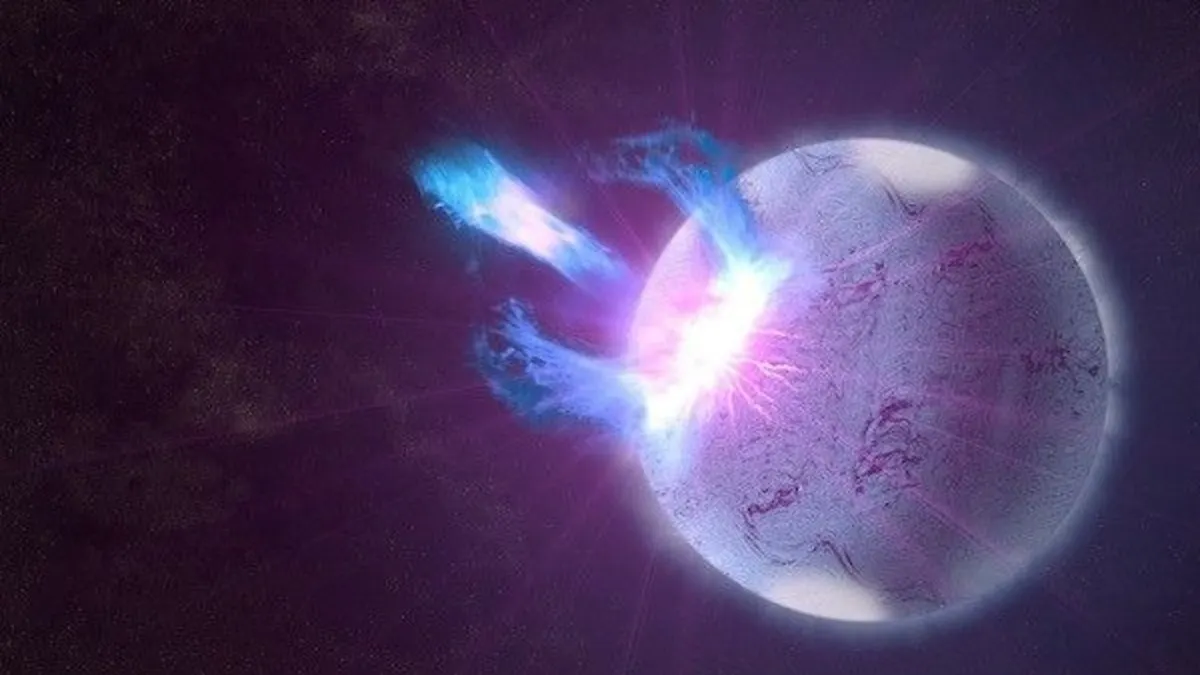
Scientists have made a groundbreaking discovery regarding the formation of the universe's heaviest elements, a process that has puzzled researchers for over half a century. A team from the Flatiron Institute in New York City has found direct evidence suggesting that giant flares emitted by magnetars—highly magnetic, collapsed stars classified as neutron stars—may act as the cosmic forge responsible for creating heavy elements such as gold and platinum. Remarkably, just one of these powerful flares has the potential to produce a planet's worth of precious metals.
Anirudh Patel, a doctoral candidate at Columbia University and the lead author of this study, expressed the awe-inspiring nature of this discovery. "It's incredible to think that some of the heavy elements around us, including the precious metals found in our phones and computers, originate from these extreme cosmic environments," he stated. The research indicates that magnetar giant flares could solve a longstanding mystery: the observed abundance of heavy elements in young galaxies exceeds what could be produced solely through neutron star collisions.
The universe's lighter elements, including hydrogen, helium, and lithium, were formed during the Big Bang. Heavier elements are typically generated through nuclear fusion within the cores of stars during their lifetimes or in the aftermath of explosive deaths. However, the precise mechanism behind the creation of neutron-rich elements heavier than iron has long remained an enigma. These elements are believed to form through a series of nuclear reactions known as the rapid neutron capture process, or r-process, which was theorized to occur under extreme conditions like those found in supernovas or neutron star mergers.
In 2017, astronomers confirmed the r-process for the first time during the merger of two neutron stars. However, these collisions are incredibly rare and cannot fully account for the overwhelming abundance of heavy elements throughout the universe. Moreover, neutron star mergers occur too late in the cosmic timeline to explain the earliest formations of gold and other heavy elements. In contrast, the extreme flares produced by magnetars are believed to have occurred much earlier in galactic history.
To better understand these processes, the New York City research team focused on magnetars, which possess magnetic fields trillions of times stronger than those of Earth. These stars occasionally emit flares—brief bursts of energy triggered by the sudden release of magnetic energy due to the rearrangement or decay of their magnetic fields. The team calculated that a magnetar's giant flare could establish the ideal conditions for the formation of r-process elements, resulting in unstable radioactive nuclei that eventually decay into stable heavy elements like gold.
Excitingly, the NYC team was able to connect their calculations to a mysterious event observed in 2004 involving the magnetar SGR 1806–20. Initially regarded as an ordinary flare, researchers later discovered that the event's total energy was approximately a thousand times greater than typical bursts. "The event had kind of been forgotten over the years," remarked Brian Metzger, a senior research scientist at the CCA and a professor at Columbia University. "But we quickly realized our model fit perfectly with it." Patel added, "For the next week or two, I couldn't think about anything else."
By correlating the 2004 flare's observations with their theoretical model, Metzger, Patel, and their colleagues estimated that the event likely produced around 2 million billion billion kilograms of heavy elements—roughly the mass of Mars or equivalent to 27 moons! While these magnetar flares could account for about 10% of all heavy elements in our galaxy, the researchers caution that the origins of the remaining 90% remain uncertain. "We can't exclude the possibility that other sites exist that we haven't discovered yet," Metzger noted.
To build on this significant discovery, the research team plans to search for additional magnetar flares using NASA's Compton Spectrometer and Imager mission, set to launch in 2027. This mission holds the promise of unveiling even more secrets about the cosmic origins of gold and other heavy elements. "It's a fundamental question regarding the origin of complex matter in the universe," Patel concluded. "It's an intriguing puzzle that has yet to be fully solved."